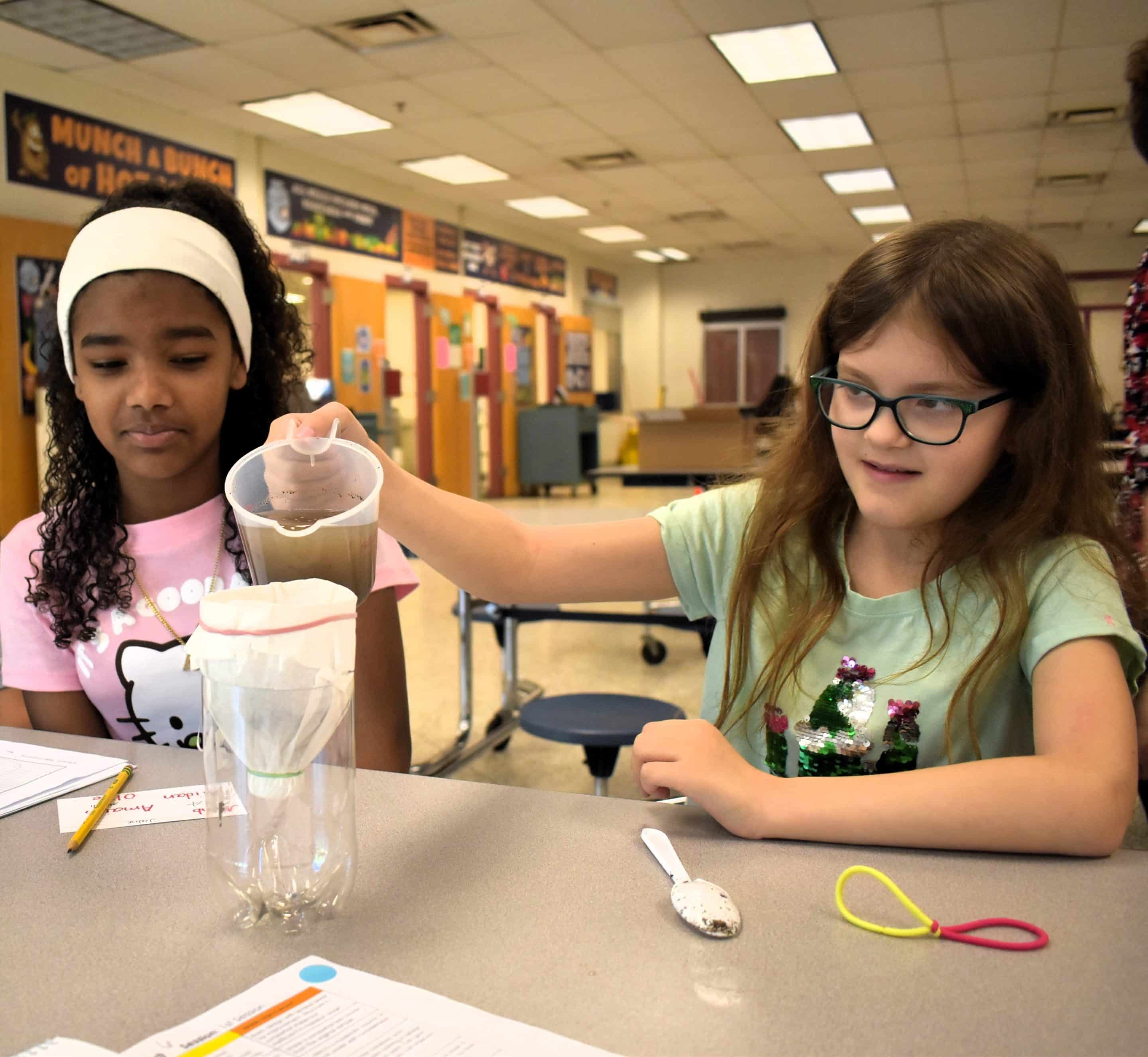Westfield Intermediate School fifth graders Amaiah Santiago and Olive Reyes pour dirty water through their filtration device.
Reminder Publishing photo by Amy Porter
WESTFIELD — Fifth graders at Westfield Intermediate School had their water filtration projects reviewed by industry professionals and community members the morning of May 22 in a culmination of their Project Lead the Way module on the Earth’s water.
STEM coordinators Lauren Cadigan and Lindsey Ayers said students applied their knowledge of the interactions between the sun, gravity and the water cycle to create a method for generating clean drinking water. Ayers said the students used the design process to sketch, build, test and reflect on a filtering device to turn dirty water clean.
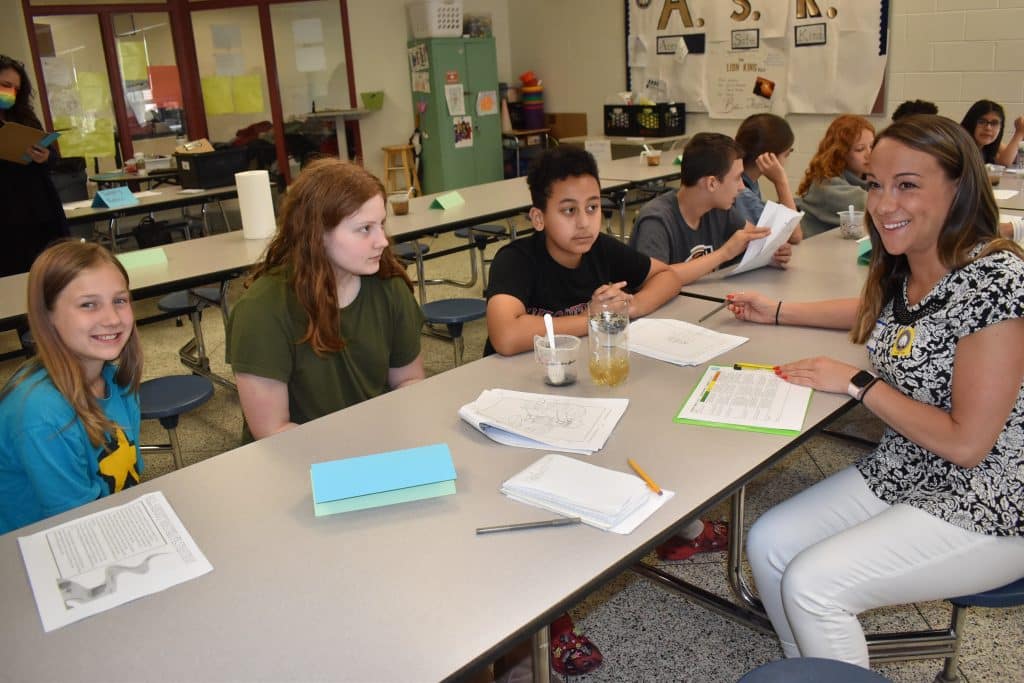
Reminder Publishing photo by Amy Porter
WIS science and math teacher Tracy Natario said at the start of the project, the students picked their own materials to make prototypes of the filters. They then narrowed down the materials into a list developed through their research, and used those materials to build their filters.
Materials used included tin foil, coffee filters, cotton balls, charcoal, gravel, aquarium rocks and fine sand.
For the testing part, the students gathered in two sessions in the school cafeteria, where they were given a cup of dirty water, and waited to be joined by a professional to witness the result of pouring it through their filters. The students not only demonstrated how well their filters cleaned the water, but also discussed the importance of collaboration and the design process.
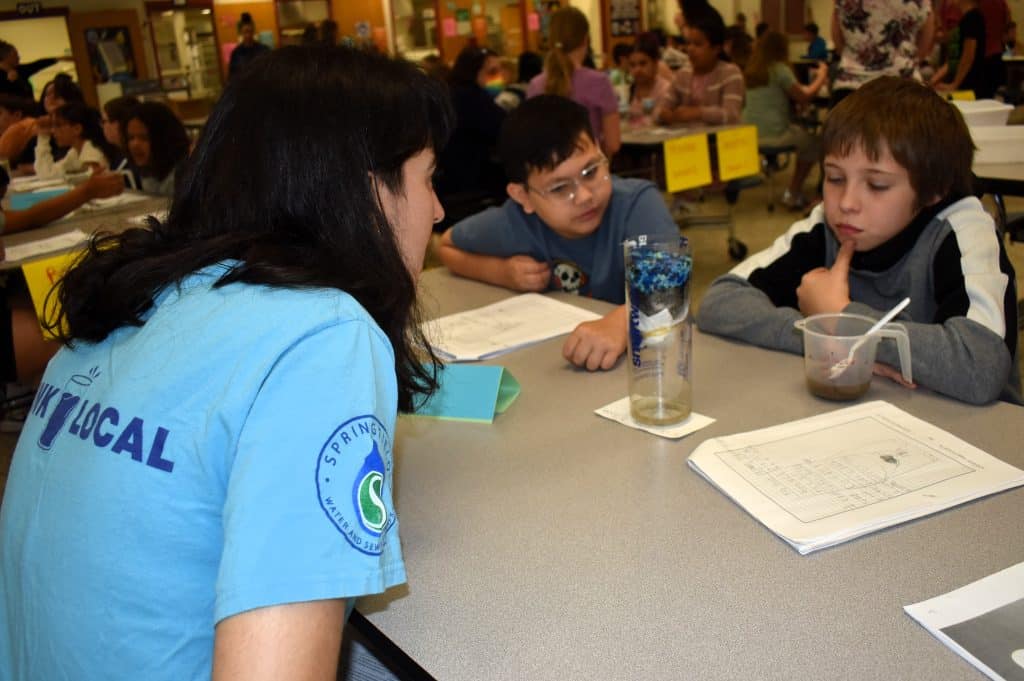
Reminder Publishing photo by Amy Porter
The team of Amaiah Santiago, Olive Reyes and Aidan Rash had a good outcome of clear water with their filter, which was layered with coffee filters, fine sand, aquarium rocks, more sand and coffee filters, with cotton balls added around the edges to keep materials from floating down. The only drawback was that they lost some water in the filtering process.
Asked which materials worked best at cleaning the water, Rash said he thought the fine sand cleared out the floating material in the water.
Students also gave written and online presentations and drawings of the composition of their filters to share with the volunteers, who then provided written feedback for the students on their presentation skills, and how well they met the criteria and constraints of the engineering challenge.
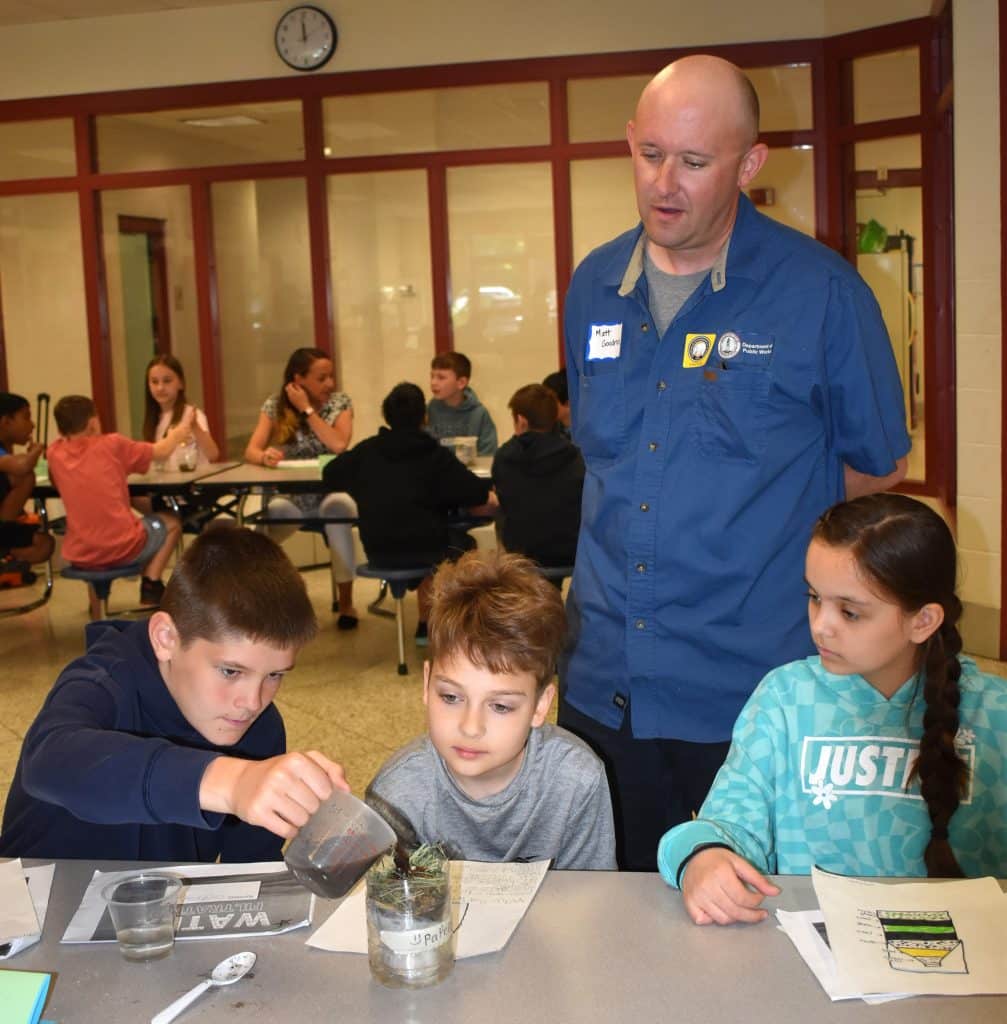
Reminder Publishing photo by Amy Porter
Volunteers included Westfield City Engineer Allison McMordie and water treatment operators Brenda Lopez and Matt Goodniss; Lauren Perry of Springfield Water & Sewer; Ellen Kernan, an analytical chemist with Cambrex; representatives of Polish National Credit Union; Westfield High School AP Environmental Science teacher Jon Tyler and members of his class; retired science teacher Lisa Strycharz; Kristen Mello of WRAFT and the Westfield City Council; and School Committee member Kathleen Hillman.
Comments from the volunteers were positive about the project. Kernan recommended to the students in her group to use activated charcoal in their water filters, which she called the industry standard.
“It was very successful. The kids put in a lot of time and effort and were engaged,” said Goodniss. His team of students Tim Boyko, Oleg Kulyah and Lyanna Stuzhuk had also drawn a clear picture of the layers of their filter, two of which were charcoal.
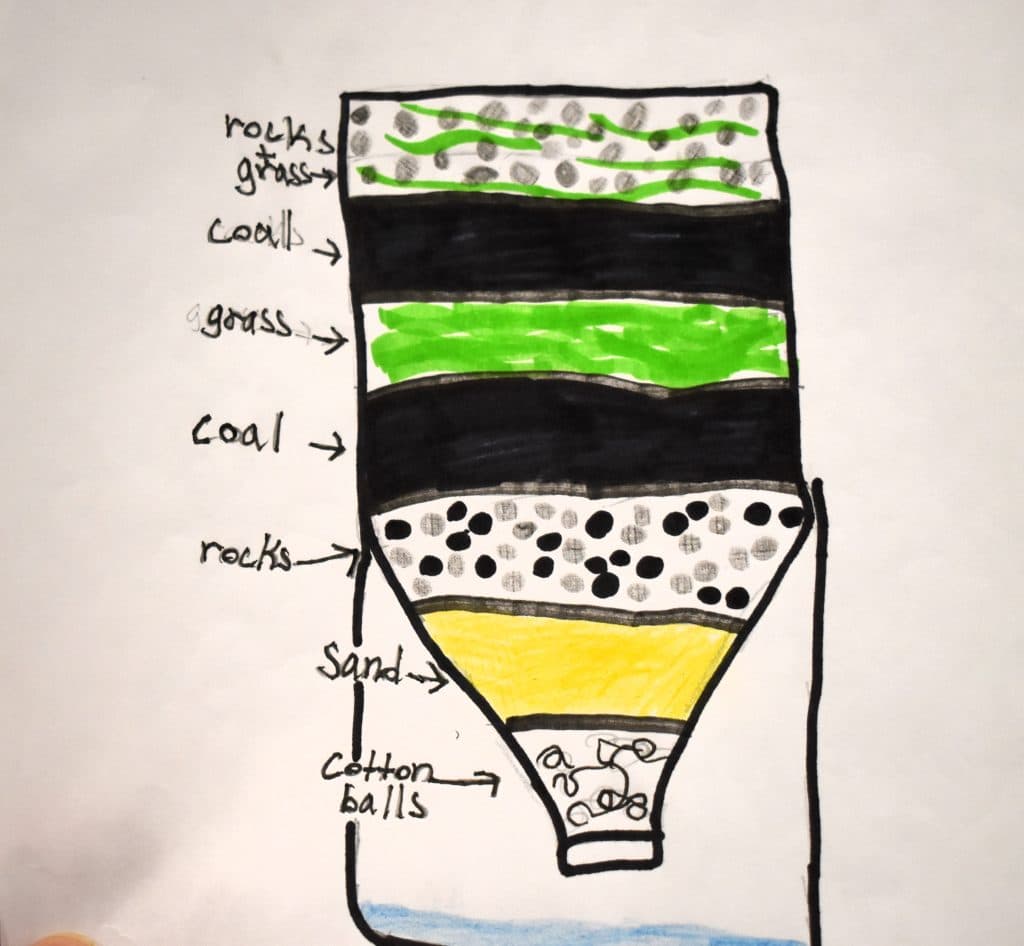
Reminder Publishing photo by Amy Porter
“I’m really proud of them,” Cadigan said about students’ work on the project. “The Water Filter Showcase highlighted our students’ and teachers’ dedication and collaboration at Westfield Intermediate School. Students demonstrated their problem-solving skills and creativity by engaging in the engineering design process to tackle a real-world problem. The feedback from the industry professionals was outstanding, underscoring the value of applied learning in [Westfield public schools].”
Lopez said the students she met with did “really well” explaining the design, but had dropped the filter on the way to the cafeteria, so it didn’t work as well as it might have. She admitted she might have done the same thing, and advised them to be more careful with their projects.

